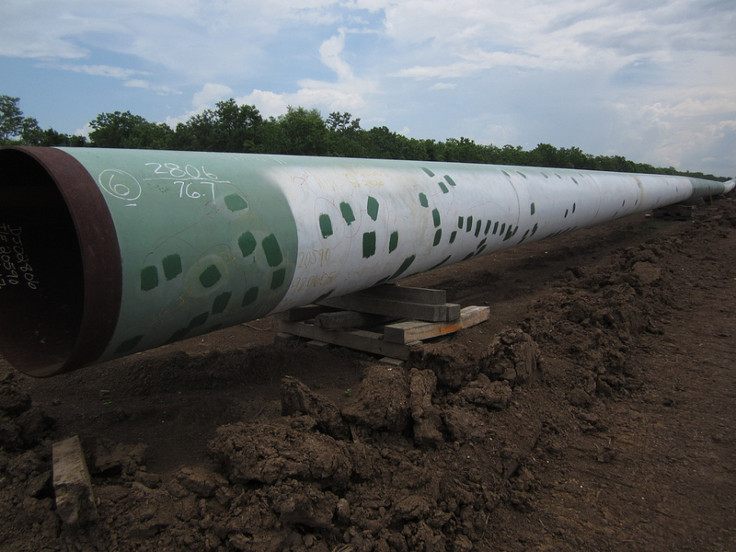Could One Person Block Keystone XL?

Julia Trigg Crawford, a rancher turned activist, is not giving up. Instead the Texan is continuing the fight against the southern portion of the controversial Keystone XL pipeline, even though the 36-inch cylinder tube already runs under her family’s 600-acre farm in East Texas.
It all started back in 2008 when TransCanada, the Canadian energy giant who is contracted to build the project, offered her $7,000 for essentially all the control of her land without having to own it, according to a recent interview Crawford had with yesmagazine.org.
She refused so TransCanda filed for eminent domain rights and Crawford was eventually forced to allow the company to lay the pipeline under the farm.
Looking back on her decision in 2008, Crawford said that no amount of money could have changed her mind because of her family's strong connection to the land her grandfather bought in 1948.
The Keystone XL pipeline consists of a two parts:
The northern segment, if approved, would bring oil sands from Alberta, Canada to refiners along the U.S. Gulf Coast. The second half, dubbed the Keystone Gulf Coast pipeline would bring crude down from the oil hub at Cushing, Okla., south to Gulf Coast refineries as well.
Unlike the southern leg, the northern segment crosses the U.S.-Canadian border and therefore needs a presidential permit. The energy giant is currently awaiting an answer from President Barack Obama, which has so far designated the State Department to review whether the pipeline is in the U.S. national interest.
Since TransCanada received eminent-domain rights from the Texas Railroad Commission, Crawford has gone through lower courts arguing that the energy company does not fulfill the the requirements.
In August, an appeals court disagreed with Crawford, prompting her to file an appeal to the Texas Supreme Court.
Crawford has transformed into an environmental rock star. She is looked up to by many landowners who have or may soon encounter similar scenarios. The Texan constantly tours the country sharing her story hoping to challenge TransCanada's use of eminent domain and to stop the pipeline altogether.
While some of her fans show their optimism in letters and contributions for legal fees, others think the opposition's days are numbered and point to recent court cases that have ruled in TransCanada’s favor.
In October a U.S. Circuit Court of Appeals in Denver refused to temporarily stop construction of the Keystone Gulf Coast pipeline.
The Sierra Club, Clean Energy Future of Oklahoma and the East Texas Sub-Regional Planning Commission had sued the U.S. Army Corps of Engineers, saying the pipeline would pose significant environmental risks. They wanted to put an injunction on Keystone XL's construction while the lawsuit was being heard, but a district court denied the request.
In a split decision, judges from the 10th U.S. Circuit Court of Appeals upheld the ruling, saying the plaintiffs were unable to prove that environmental harm would outweigh the economic risks of halting construction.
The appeals court said it was “undisputed that further delay [would] cost hundreds of thousands of dollars each day."
The environmental groups also could not post a bond to cover the energy giant’s losses if the company won the lawsuit.
“We are pleased that the Court of Appeals has agreed that the Sierra Club’s attempt to get an injunction to halt construction was 'woefully deficient' and that the harm to TransCanada [from granting a preliminary injunction] was significantly greater than the 'minimal impact on the environment,'” TransCanada spokesman Shawn Howard told the International Business Times.
The question now is, will this set a precedent for the approval of the northern half of Keystone XL?
© Copyright IBTimes 2025. All rights reserved.






















